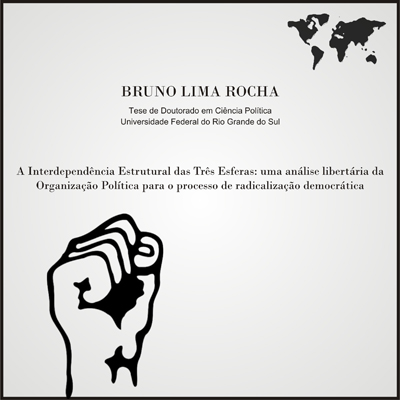

.jpg)
















|
Original Content in English The global power of finance capital the effects in Brazil
Posted on August, 2014, By: Bruno Lima Rocha
This article is the part of a series dealing with macro-economic structures and their effects in Brazil. Here I describe the visible effects of a rentier logic in the country. Rentiers are those that live on dividends and profits, and not through direct work – in other words, those who live by exploiting the labor power of others. For a class to enjoy the status of rentiers, there must be a consistent and reliable mechanisms of class power able to extract rents from the productive economy – from the working class. In Brazil, finance capital is able to rely directly on the state to deliver much of this extraction. The state does so through two devices: taxation for service of sovergn debts; and the notorious Delinking of Union Reserves law (DRU). Tax the Workers to feed the Rentiers
In Brazil, the federal government budget absorbs roughly 66% of tax revenues nationally. This means that for every real of tax income, the federal government (as opposed to the state and municipal governments) receives 66% of that real. Of the many political organisms in Brasilia, this budget is shared through different rubrics and destinations in a Kafkian labyrinth of budgetary rules. The states and municipalities receive little. Debt service consumes more than 42% of federal budget. This means that 28% (42% of the federal budget with takes 66% of all taxes) of all taxes collected in Brazil goes directly to the capitalist rentier class. Brazilian and international banks need not collect the debts owed them by themselves, because the Brazilian government, headed by the Workers Party, will do it for them
In the forecast for the year 2014, this would imply almost half of the R$ 2,383 trillion to be spent by the Union this year will be paid directly to the banks. This debt squanders R$ 4 billion per day. The main destination of which is the ATM of public bonds buyers, in their majority banks or investment funds, including pension funds. In 2014 budget alone, according to the Citizen Debt Audit, the country squandered more than R$ 203 billion (close to 65% of federal spending) by the second month of the year.
Austerity by Fiat
If the budgeted payments to the rentier banks is not sufficient, they need not worry the government can simply raid moneys allocated to other purposes. The notorious DRU law allows the executive branch to take up to 20% of the budget for contingencies. In most cases this means raiding funds allocated for welfare, health, education, and infrastructure to pay the financiers.
The DRU was originally meant to be temporary. It was created in 1994, allegedly in order to maintain macroeconomic stability during the country’s neoliberalization process. It has been extended – generally by consensus – in congress for the last 20 years. The effect has been to empty the country’s investment capacity — which doesn’t surpass 18% per year, compared to an average of 25% of the other members of BRICS (Brazil, Russia, India, China and South Africa).
Conclusion: If everything that is solid melts into thin air, it is because in the actual economy someone makes the wealth evaporate and become a digit, redeemable in some tax haven. Through the financial casino it systematically regulates the plundering of collective work.
The power of the banks over the actual Brazilian economy
In addition to the concerns about the budget, we have the presence of the banking sector over the actual Brazilian economy. I emphasize that this criticism is presented with regards to the elements of continuity of the Fernando Henrique Cardoso era that have been perpetuated since the Lula-Dilma period (started in 2003). I recognize that, for the world standard of capitalism, Brazil has relatively tougher rules and a comparatively more stable financial system, but that’s all. The following data, of the banks’ turnover in 2013, are from the Economática consultancy and were obtained from the G1, Folha, and Estadão newspapers. First place, at least, was the Bank of Brazil with net profits of R$ 15.75 in 2013. Following that is Itaú Unibanco with a countable net profit of R$ 15,696 billion, higher than the R$ 13.594 billion registered a year earlier. In third place is Bradesco bank, with a countable net profit of R$ 12.011 billion in 2013, an amount above the R$ 11.381 billion recorded the previous year.
The fourth best-placed bank was Santander Brazil, which represents something very significant on a global scale. In 2013 the Spanish bank closed with R$ 5.7 billion, a decline when compared with the R$ 6.329 billion in 2012. Despite consecutive declines of 5%, Santander recognizes that 47% of its worldwide turnover of 4,37 billion Euros – more than 90% more than in 2012 – comes from Latin America, 23% being from Brazil. Europe would represent 43% of this same profit, with 7% from Spain and 17% from the United Kingdom. The USA enters with 10% of this profit.
That’s why whenever there’s a fall in the basic interest rate, a representative of one of the big banks’ appears and cries about the risk of inflation. The Brazilian Special Clearance and Escrow System (Selic) implies targeting almost a quarter of this bank’s profits on a global scale. By the Santander example, we can take other big bank operators in the country and we will see, proportionally, aggregate billing rates. There’s more. Santander occupies the 8th position in the ranking of accumulated power, measured by the Proprietários do Brasil (proprietariosdobrasil.org) project. In this same index Bradesco is in fourth place and Itaú in 19th. This list also contains the pension funds of state companies, notably that of Previ (Bank of Brazil) which is in 2nd place. These funds are a key element — along with the National Economic and Social Development Bank (BNDES) and the state banks — for federal investment policies.
There is fitting to make a joke that comes from the times of Wall Street fever when a visitor watched the yachts of brokers’ senior partners moored in the marinas on the Hudson River estuary. The observer said, “Interesting, but I would rather see the yachts of ordinary investors and account holders”. The same goes for the financial health of the average Brazilian. By breaking one record after another, the concentrated banking sector reflects the volume of transfer income for the lenders and holders of collective resources and not the account holders and savers.
Originally published in Conjuncture Magazine (conjuncturemagazine.org), kindly translated by Daniel Gutiérrez and Antje Dieterich
|

